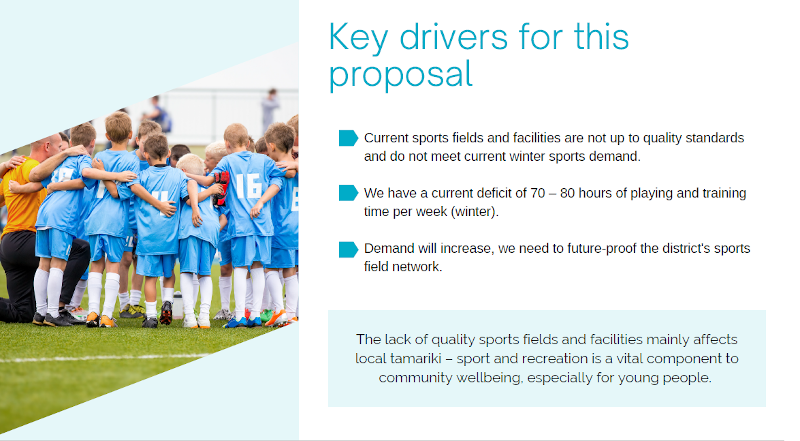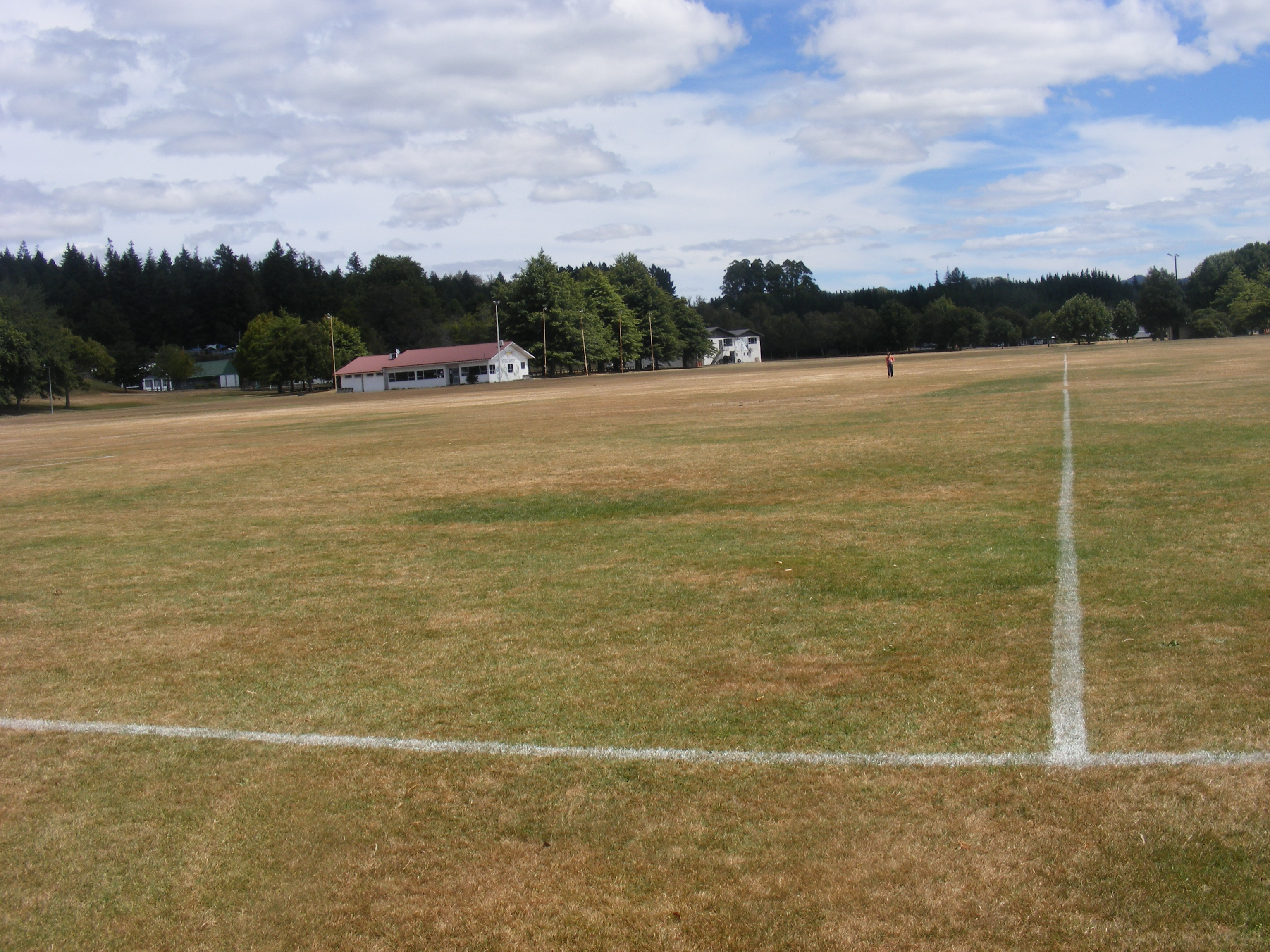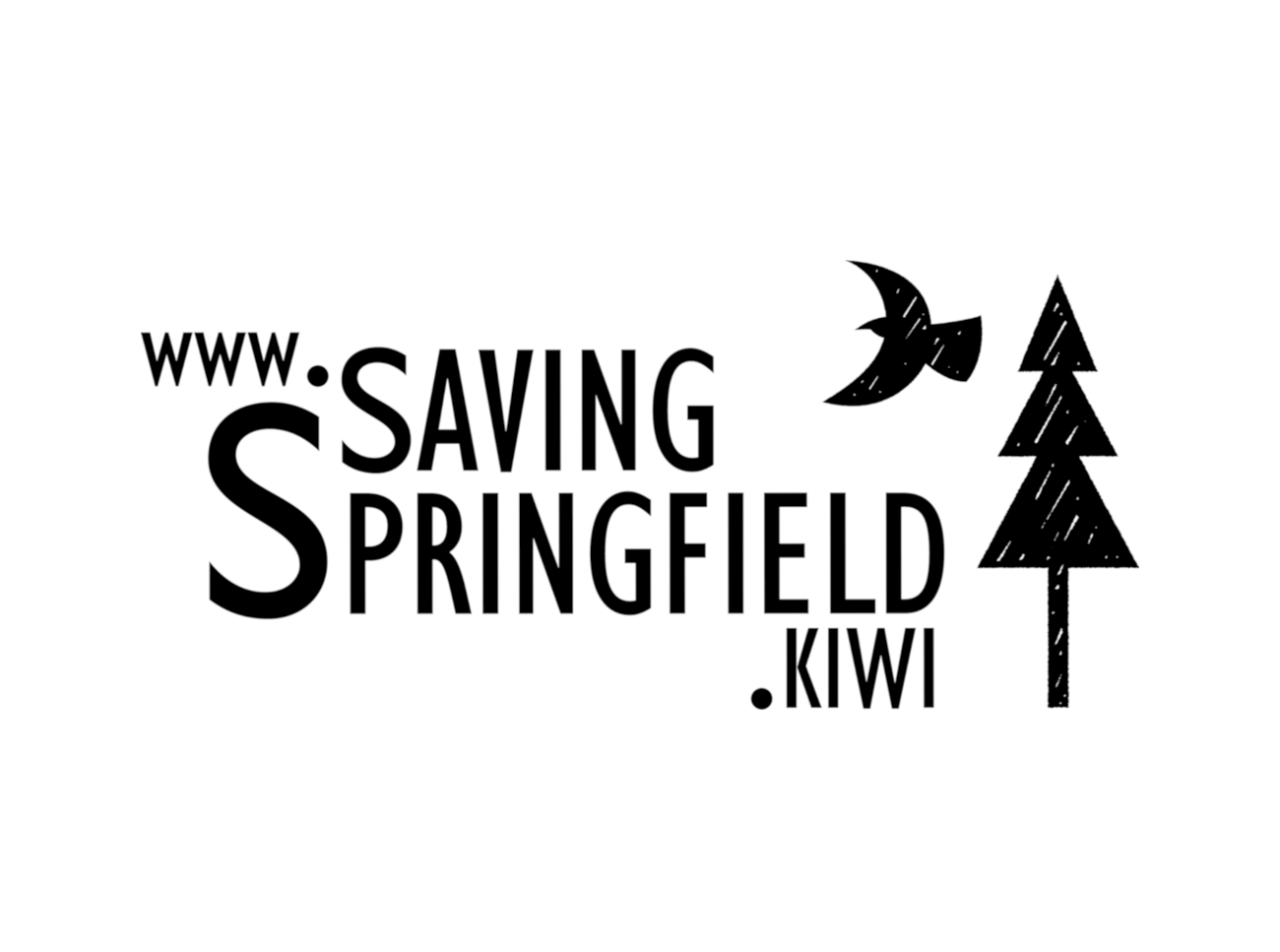In his presentation at the Springfield Community Conversation on 19 April 2021, the Rotorua Lakes Council Sports Development Manager, Steve Watene, presented the key drivers behind the Westbrook Sports and Recreation Precinct “proposal”:

However, a careful analysis of the information obtained from Council show:
- the quality standards applied are arbitrary and unrealistic. That said, the quality of the sports fields have declined due to neglect by the Council;
- the claimed deficit of 70-80 hours of playing and training time per week can be turned into a surplus of 25-35 hours per week with a modest investment of just over $2 million; and
- the assumption that demand will increase is not based upon reliable Statistics NZ data.
How’s the quality of our sports fields?
The scale used in the Sports Field Construction Quality Assessments report to assess the quality of the fields is confusing. The scale goes from “1” (High Quality) to “5” (low quality) with “0” being “unacceptable”. It would be less confusing if “6” was “unacceptable”. However, Neil Hunt Park, which is still of reasonable quality and usable, is graded as a “unacceptable” and would presumably be rated the same as a swamp (“unusable”).

To put this scale into perspective, the Rotorua International Stadium, which is regarded as one of the finest playing surfaces in the Country (it is well-maintained but hardly used), only rates as a “3” (average). On this scale it is unrealistic to expect any other fields in Rotorua to be any better than a “4” or “5”. Even a rating of “unacceptable” may well be more than satisfactory for the purposes of junior sports due to the reduced wear and tear on playing surfaces compared to senior sports. It many cases it may even be satisfactory for senior sport.
If Neil Hunt Park (and other parks) have deteriorated to an “unacceptable” standard (which is a dubious claim) then that can only be the fault of the Rotorua Lakes Council – who are responsible for their maintenance. Multiple sources have confirmed that the Council has “stopped spending money” on those parks. That means they have stopped doing the usual field maintenance (apart from lawn mowing) including fertilizing, aerating etc. That being the case it is no wonder that the fields are in decline.
It appears the Council are deliberately “running down” the other parks around town and then pointing to the poor quality of the fields to justify building new sports on the Springfield Golf Course.
Is there a current deficit of 70 – 80 hours of playing and training time per week in winter?
Firstly, the Council reports omits the following fields which are capable of being used for playing and / or training:
- Glenholm Reserve;
- Jackson Park;
- Warwick Drive Reserve; and
- Linton Park No. 3.
Secondly, the Council reports also do not account for around 35 school’s whose fields are also used for training juniors.
The report also doesn’t include the following unutilised areas that could be developed:
- area at the back of Board Park which is enough room for two more fields;
- the Valodrome at Westbrook, which is not used and could be converted into one more full sized field;
However, ignoring the above oversights, according to a report commissioned by the Rotorua Lakes Council entitled the Sports Field Construction Quality Assessments dated August 2018, the investment of a mere $2,119,600 on Rotorua’s existing 35 sports fields would raise each of those fields by one or two grades. By comparing the “New Carrying Capacity” with the “Current Carrying Capacity” and adding up the totals for each of Rotorua’s 35 sports fields, we can see that this would increase the current “carrying capacity” from 160 hours per week to 265 hours per week, which is an increase of 105 playing hours. In other words the alleged deficit of 70-80 hours of playing and training time per week would become a surplus of 25 – 35 playing hours per week.
This eliminates the “key drivers” behind the proposal to repurpose the Springfield Golf Course for sports fields.
Investing in the quality of the other sports fields is the obvious and most prudent course of action for the Council to take. The proposition that it is necessary to destroy a popular and profitable sports facility that is the Springfield Golf Course rather than maintain the existing fields is plainly absurd.
If this development is truly for our tamariki why are we waiting for another 7-10 years to pass before we build a new sports hub. We have the fields today as well room for an additional fields if/when required on unused council reserves with little to no disruption to the local community.
Is it worth sacrificing a golf course on the basis of speculation that demand for sports facilities will increase?
The Council have chosen not to use Statistics New Zealand predictions for population growth. Instead:
The Statistics NZ and RLC’s own population projections for 2043 show quite different results – the former effectively static if not slightly declining, the latter 23% growth.
Future demand was calculated for 2028 and 2038, with RLC (and not Statistics NZ) population projections being used.
Essentially, the Council has directed the report writers to use their own imagined statistics, rather than relying upon the proper independent government department statistics. This is plainly disingenuous and grossly misleading.
But even if you allow for the Council’s inflated population growth projections, the Springfield Golf Course is still a sports facility. The Rotorua Lakes Council has a reputation of supporting the development of sport in Rotorua, most notably Mountain Biking. It is inexplicable that while the Council is willing to invest heavily in other sporting codes in Rotorua, it is willing to sacrifice the Springfield Golf Course for the alleged benefit of other sporting codes. This is nonsensical. Why the hostility towards golf? At face value, it doesn’t make sense.
With 790 sections being released on Pukehangi Road, we can reasonably assume demand for the Springfield Golf Course will continue to increase – both by golfers and walkers alike. According to NZ Golf, as of March 2021, membership has increased by around 11.70% on the previous year and rounds of golf have increased 38.7%. Golf is a growing sport.
Every golf club, including Springfield, is populated by people who previously played other sports but at around age 35 found they were no longer able to keep up with the youthful players. Recovery from high-intensity sport such as football and rugby at that age takes longer, is more painful and injuries take longer to heal. Golf serves as a destination for retired sports people from all the other sporting codes. If there is going to be an increase in player participation in other sports, as the Council predict, that will trickle down into golf club membership in the future.
